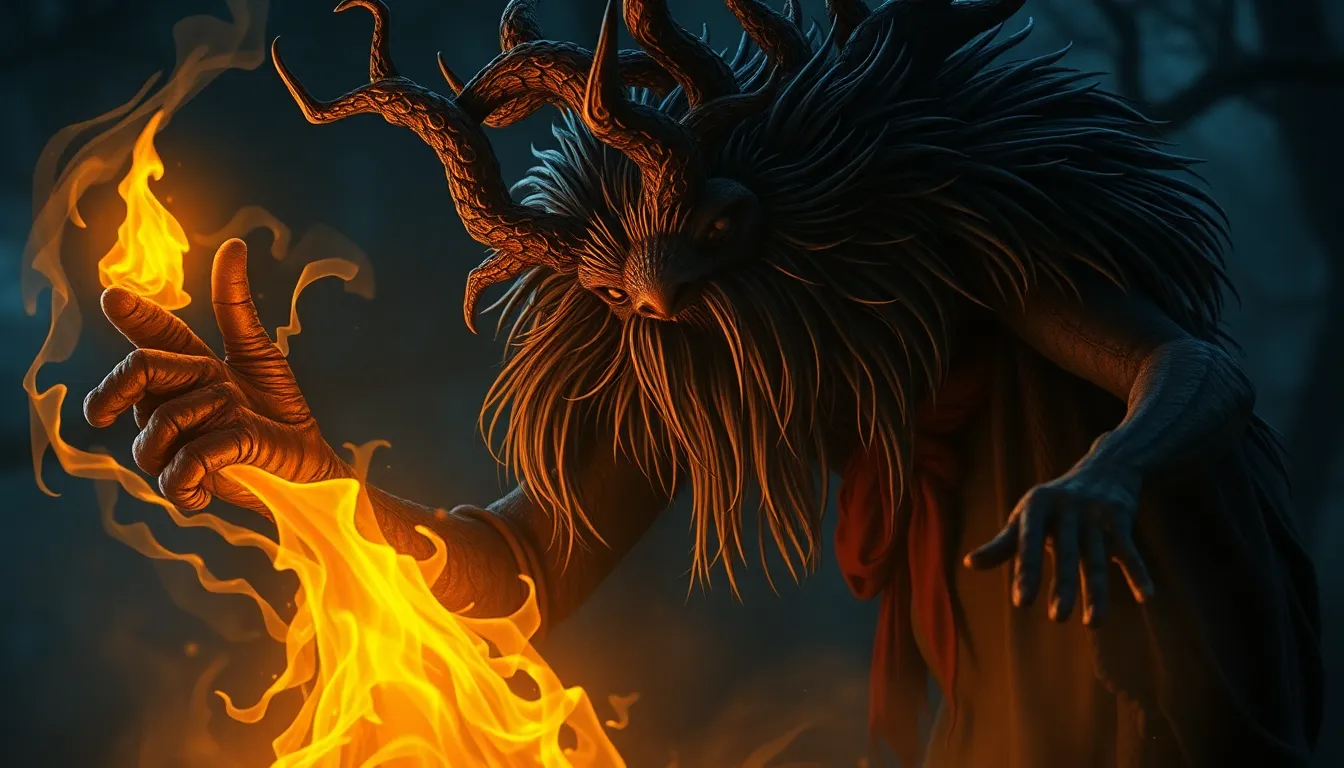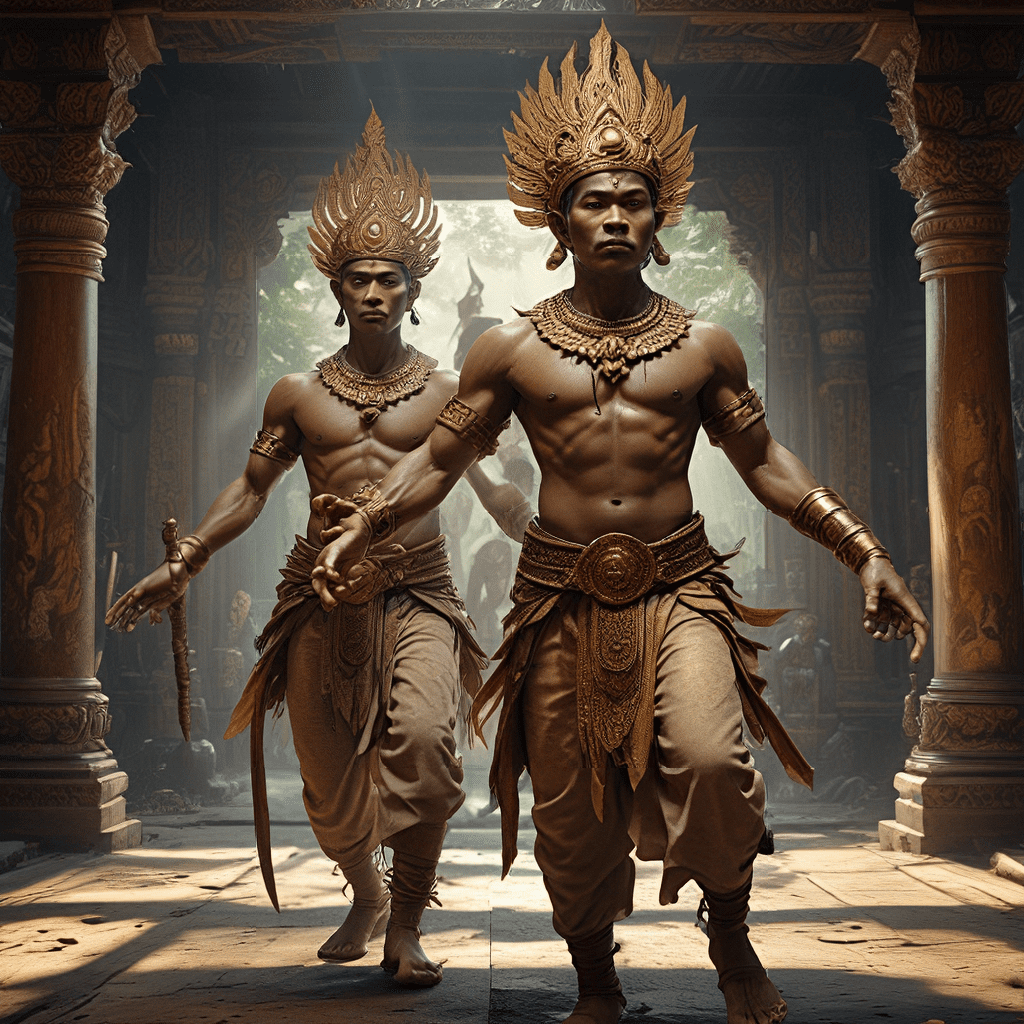The Top 10 Trickster Tales That Will Make You Rethink Everything
Introduction: The Allure of Trickster Tales
Trickster tales are a captivating genre of folklore that feature clever, mischievous characters who often defy convention and authority. These stories are characterized by their humor, wit, and the ability of the trickster to outsmart others, often leading to unexpected consequences. The cultural significance of tricksters in folklore cannot be overstated; they serve as a reflection of society’s values and challenges, often challenging norms and provoking thought.
Trickster tales hold a mirror to human nature, revealing the complexities of morality and the dualities of wisdom and folly. Through these narratives, we are encouraged to rethink our perceptions of right and wrong, as well as the consequences of our actions. Here, we explore ten of the most compelling trickster tales that continue to resonate with audiences today.
1. Anansi the Spider: The Clever Weaver of Stories
Anansi, the spider, is one of the most beloved tricksters in African folklore. His stories often revolve around themes of intelligence, cunning, and the consequences of one’s actions. Anansi’s tales typically feature him outsmarting larger and more powerful creatures, illustrating that wit can triumph over brute strength.
- Moral Lessons: Anansi teaches lessons about resourcefulness, humility, and the importance of storytelling.
- Cultural Icon: Anansi represents the rich oral traditions of West African cultures and has become a symbol of cleverness and resilience.
- Contemporary Impact: Anansi’s influence can be seen in modern literature, where his character inspires retellings and adaptations across various media.
2. Coyote: The Shape-Shifting Trickster of Native American Lore
Coyote is a central figure in many Native American myths, known for his shape-shifting abilities and adventures that often blur the lines between chaos and creation. Coyote’s stories explore profound themes such as morality, the balance of nature, and the consequences of one’s actions.
- Adventures and Transformations: Coyote often finds himself in humorous or precarious situations, revealing the duality of his character—both wise and foolish.
- Themes: His tales encapsulate the chaos of life and the complexity of existence, urging listeners to reflect on their own choices.
- Embodiment of Wisdom: Coyote teaches that wisdom can sometimes come from unexpected places, including mistakes.
3. Loki: The Norse God of Mischief
Loki is a fascinating figure in Norse mythology, known for his cunning and trickery. As a god, he embodies the spirit of mischief, often creating chaos among the other gods and influencing the fate of both deities and mortals.
- Role in Mythology: Loki’s tricks often lead to significant events, including the creation of powerful artifacts and pivotal moments in the Norse pantheon.
- Implications of His Tricks: His actions serve as a reminder of the unpredictable nature of life and the consequences of one’s actions.
- Relevance Today: Loki’s tales resonate with modern themes of rebellion and the questioning of authority.
4. Br’er Rabbit: The Master of Outwitting Oppression
Br’er Rabbit is a significant character in African American folklore, known for his cleverness and ability to outsmart stronger opponents. His stories often reflect the struggles of marginalized communities, using humor and wit to overcome oppression.
- Cunning Escapades: Br’er Rabbit’s adventures often involve outwitting characters like Br’er Fox and Br’er Bear, showcasing his resourcefulness.
- Historical Context: The tales emerged during a time of oppression, symbolizing resilience and the cleverness of those marginalized.
- Symbol of Resilience: Br’er Rabbit embodies the spirit of survival through intelligence and cunning.
5. The Monkey King: A Journey Through Chaos and Enlightenment
The Monkey King, known as Sun Wukong, is a central character in the classic Chinese novel “Journey to the West.” His story is a blend of adventure, rebellion, and spiritual growth, making him a complex trickster figure.
- Adventures: The Monkey King’s journey is filled with humorous escapades and challenges as he seeks enlightenment.
- Themes: His rebellion against authority and societal norms encourages readers to question the status quo.
- Spiritual Growth: The character’s evolution from mischief to enlightenment illustrates the transformative power of self-discovery.
6. Reynard the Fox: The Art of Deception in Medieval Fables
Reynard the Fox is a trickster figure in medieval fables, known for his clever schemes and moral ambiguity. His tales often serve as social commentary, exploring themes of power, deception, and survival.
- Clever Schemes: Reynard’s cunning nature allows him to navigate complex social hierarchies, often outsmarting those in power.
- Social Commentary: The stories reflect the societal norms and injustices of the time, making them relevant to contemporary audiences.
- Legacy: Reynard has influenced literature and popular culture, becoming a symbol of craftiness and wit.
7. The Tortoise and the Hare: A Fable with a Twist
The classic Aesop’s fable of “The Tortoise and the Hare” presents a simple yet profound message about perseverance and humility. This tale emphasizes that slow and steady wins the race, challenging conventional notions of speed and ability.
- Underlying Messages: The fable teaches the importance of determination and consistency over arrogance and overconfidence.
- Perseverance and Humility: The tortoise’s victory serves as a reminder that success often comes from hard work rather than natural talent.
- Modern Understanding: The tale continues to resonate, influencing contemporary views on competition and personal growth.
8. Till Eulenspiegel: The Medieval Jester Who Exposed Truths
Till Eulenspiegel is a legendary character known for his pranks and humorous antics in medieval Europe. His stories often contain sharp social commentary, exposing the follies and hypocrisies of society.
- Pranks and Antics: Till’s clever tricks reveal the absurdities of authority and the human condition.
- Social Commentary: Through humor, he critiques societal norms, making his tales both entertaining and thought-provoking.
- Legacy: Till Eulenspiegel has become a symbol of the jester archetype, using laughter as a tool for truth.
Conclusion
Trickster tales, from Anansi to Till Eulenspiegel, offer profound insights into human nature, society, and the complexities of morality. These narratives challenge us to rethink our beliefs and perceptions, inviting us to find wisdom in humor and chaos. As we explore these tales, we discover the enduring power of the trickster to provoke thought, inspire change, and entertain across generations.




